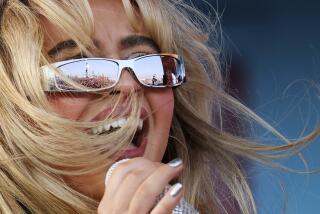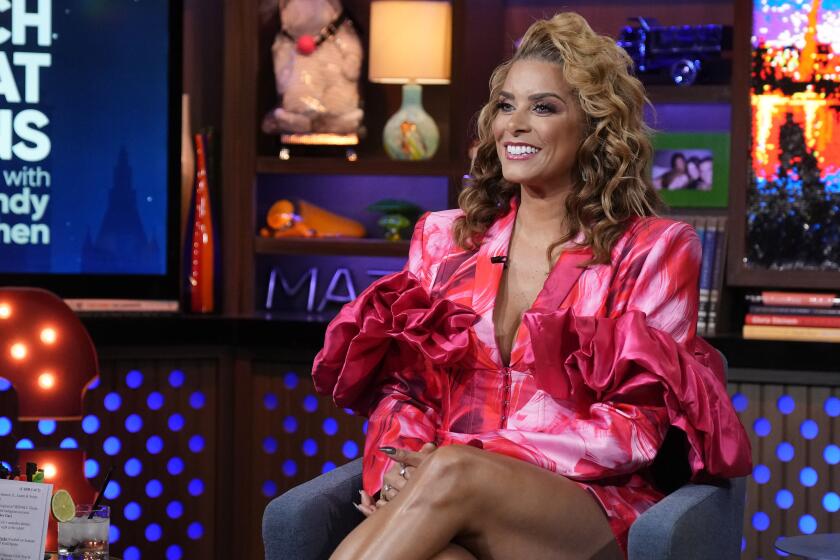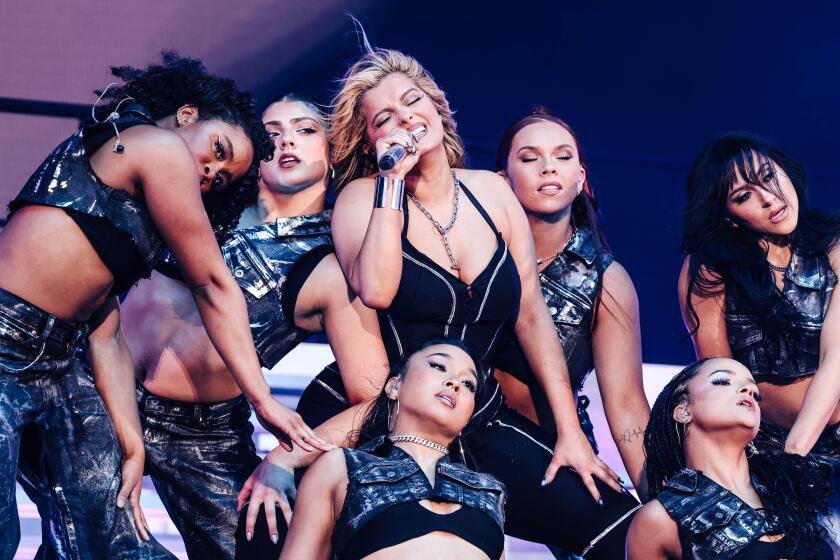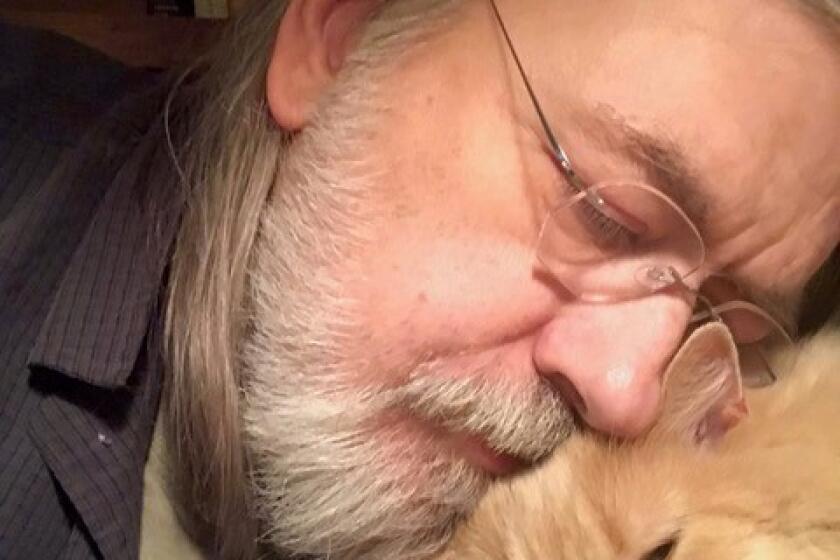Sesame Street’s Newest Resident Is Furry, Affectionate and Latina
Rainy weather outside didn’t faze the dozens of children and parents inside the balloon-filled viewing room at Plaza de La Raza to meet “Sesame Street’s” Maria, Luis and the newest member of the Muppet television cast, Rosita.
The furry monster, who speaks high-pitched English with a thick Spanish accent, is part of “Sesame Street’s” increased focus on Latino culture and its latest effort to celebrate cultural diversity.
“Sesame Street,” a creation of the Children’s Television Workshop, is in its 24th season and has won a record 50 Emmy awards. The PBS program is seen on KCET in Los Angeles at 8, 9 and 10 a.m. Monday through Friday, 7 a.m. on Saturday and 7 and 8 a.m. on Sunday.
For two decades, Maria (Sonia Manzano) and Luis (Emilio Delgado) have been the Latino presence on the children’s show, regularly engaging viewers in bilingual songs or teaching them how to count to 10 in Spanish. That was the case during the 40-minute musical program in December, which brought together a diverse mix of children from downtown and East Los Angeles elementary schools.
Now Kermit and friends are being joined by Rosita, who is brought to life vocally and physically by Carmen Osbahr. In 1985, Osbahr moved from her native Mexico City to New York City with the intention of landing a permanent home on “Sesame Street.” She had spent almost a decade as a puppeteer on various Televisa programs. It was during the auditions for “Plaza Sesamo,” the Mexican adaptation of “Sesame Street,” that Osbahr met Kermit Love, long-time associate to Muppets creator Jim Henson.
Love suggested she go to New York to receive more training in her craft. “When I walked into the (Children’s Television Workshop) studios, I was just amazed,” she recalled. She spent months studying with Love. But, with no positions open to her, she returned home.
In 1989 she went back to New York and was finally hired by Henson. After playing minor roles, she developed the Spanish-speaking Rosita. She named the character after one of her best friends in Mexico. “We also figured learning to roll the R in Spanish can be difficult,” she said. “We could play a lot with that while teaching kids to do it.”
Osbahr created Rosita as a young girl monster proud of her heritage who encounters problems learning English. And the lovable Rosita likes to embrace her new friends, so she was given long arms meant for hugging.
Says Osbahr about her new role: “It’s really nice to know there are children being influenced and helped with my character.”
How do the other cast members feel about her? “Finally, I get to talk to another Mexicano on the set,” joked Delgado. Delgado was born in Calexico, Calif., on the border with Mexico, and later studied in Los Angeles before moving to New York.
Manzano, a Puerto Rican who grew up in the South Bronx section of New York City, is pleased with the educational value of the show’s Latino curriculum. “It has always intrigued me how surprised other people are when they see white, black and brown people all belonging to the same Latino family,” she said. “They don’t understand how we identify along cultural and not racial lines.”
The addition of Rosita is part of teh Children’s Television Workshop plan to spotlight minority peoples and their heritages and promote better race relations. The emphasis began in 1990 and has focused on African-Americans and American Indians. After the current focus on Latinos, various Asian-American communities will be covered.
The current Latino component will concentrate on the largest populations in the United States: Mexican, Puerto Rican and Cuban. Segments were filmed in a Mexican-American community in Phoenix, a Puerto Rican neighborhood in the East Harlem section of New York City and in a Cuban area of Union City, N.J. Shorter segments will feature murals in Los Angeles, a tour of Miami and counting in Spanish in El Salvador.
Rosita also joins a group of females that were introduced last year in the male-dominated Muppet world. They include Merry Monster, who teaches that it is personality and not size that matters, and Roxy Marie, a spunky Brooklyner.
“Sesame Street” has always been known for its rainbow approach to race, but it is now making the messages more explicit, the program’s producers said. “We really try to put an emphasis on feeling good about who they are, what they look like and where they come from,” said Arlene Sherman, coordinating producer.
If the live show at Plaza de La Raza is any indication, the message is getting across to its audience. “I think you can learn a lot from (Sesame Street),” said Angela Aguilar, 4, of Los Angeles, “like learning to be nice to other kids.”
Her mother, Susie Aguilar, said, “Rosita is great. And it’s fantastic that (children) will be encouraged to learn both languages.”
More to Read
The biggest entertainment stories
Get our big stories about Hollywood, film, television, music, arts, culture and more right in your inbox as soon as they publish.
You may occasionally receive promotional content from the Los Angeles Times.






